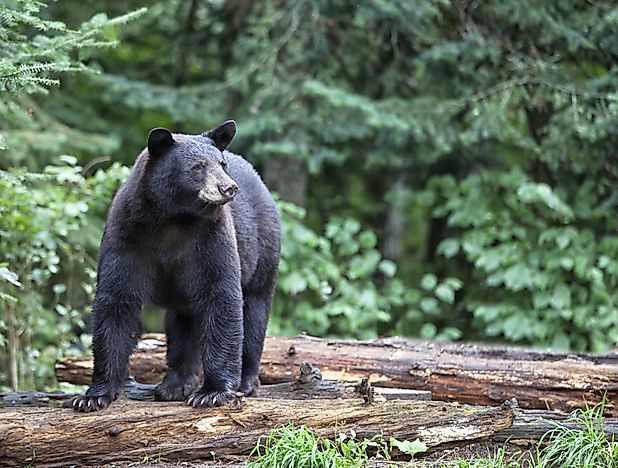While some invaders are easy to spot and identify, others, such as ants, may go unnoticed thanks to their diminutive size and furtive nature. In fact, five different types of ant are listed among the world’s top invaders, and over a hundred other ant species are known to have expanded their ranges thanks to global trade activities. One recent study suggested that 147 varieties of ant have been transported—and transplanted—to date, but this is likely to be an underestimate given than more than 200 species have been intercepted at the borders of the USA alone.
Asian longhorned beetle, which has caused the destruction of tens of thousands of trees across North America. Image courtesy of the CISR.
The uncertainty surrounding this issue prompted a team of Spanish and American researchers to undertake a global survey in order to more accurately estimate the number of ant species arriving, and establishing viable populations in, temperate habitats. Further, they wanted to explore whether these patterns were influenced by the geographical origins of the exotic ants—were they, for example, more likely to do well in habitats like those from which they came, or did they thrive in entirely different types of ecosystem?
The research team focused on data from the USA, New Zealand, and Holland—three countries characterized by high levels of shipping activity and excellent records of invasive species sightings. By employing a range of species richness equations, the researchers were able to use invasive ant presence/absence data to estimate the total number of introduced and established species in each of the three countries.
Estimates varied depending on which equations were used; for example, the total number of introduced species worldwide ranged from a low of 366 to all the way up to a high of 2027. The variation is a result of differences in how each equation deals with species that had very low detection levels. To deal with this uncertainty, the researchers calculated a mean across all the estimates—a figure that was often towards the lower to middle portion of the scale, meaning that the resulting analyses would likely be a conservative estimate of ant invasions in the focal regions.
The tawny crazy ant, a species that has invaded the Houston, Texas area of the USA. Image courtesy of Mother Nature Network.
It turned out that many of the invasive species had been spotted only once—a pattern that was particularly obvious in the USA. This suggests that there is a large diversity of exotic ants being transplanted around the world. Further, the richness estimates revealed a surprisingly high rate of introductions. Nearly 900 species are likely to have been transplanted globally, even though we’ve only observed and confirmed about 300. In North America, which is home to approximately 1000 types of ant, the number of invasives could almost equal the number of natives.
Not all of the exotics are likely to become established residents of their new ecosystems; the study estimated that just under 600 species found a way to embed themselves and set up colonies. This number is nearly 5 times higher than what has actually been observed during surveys, and represents nearly two-thirds of all introductions.
Most of the invasive species are Neotropical, with fewer coming from the Palearctic, Indo-Malay, and Australasian regions. The US was particularly hard hit by Neotropical ants, which made up the majority of both introductions (58%) and establishments (51%). The other two countries surveyed were most inundated from species from their own regions: most of Holland’s stowaway ants came from the Palearctic, while most of New Zealand’s came from Australasia. Interestingly, there were no significant biogeographical differences between the introduced and established ants within each study region, indicating that all species were equally likely to thrive once they had reached their new home.
Overall, the analyses suggest that approximately 1/14th (or 7%) of the world’s estimated 13,000 species of ants have been shipped to new habitats at some point. The authors admit that these estimates may be slightly inflated by the high rates of importation into the US, which offers more ant habitat than the other two countries examined here—both because it is physically larger and because it contains a greater variety of ecosystem types. However, results were similar even when additional countries were added to the sample, suggesting that the reported patterns are likely accurate reflections of global ant introductions.
Range of the red imported fire ant, a global pest. Image courtesy of the USDA.
There are probably two main reasons why stowaway ants are most successful within their own biogeographical regions. First, they are more likely to benefit from “climate matching”, or similarities between climatic conditions in their native and adopted countries. Second, there is greater “propagule pressure”—a larger number of migration opportunities thanks to simple physical proximity and repeated exposure.
That’s not exactly a surprising result, but probably a useful one nonetheless if we want to improve our ability to locate, identify, and prevent impending invasions. After all, ants can play a critical role in ecosystem function, and an imbalance in local myrmecofauna could have serious implications for the health of local habitats—or, at the very least, could prove to be an expensive and sometimes painful annoyance, as anyone who has dealt with a red imported fire ant could tell you.
Given the non-random nature of ant introductions, the authors suggest that we should develop targeted strategies for monitoring shipping routes (especially from the Neotropics). Now that we know where the ants end up, it would also be helpful to have a better understanding of where they originate. This will require further studies of introduced and established ant populations in other destination habitats, since the stowaways may hop on board at any number of ports—not just those in their homelands.
---
Miravete, V., N. Roura-Pascual, R.R. Dunn, and C. Gomez. 2014. How many and which ant species are being accidentally moved around the world?Biology Letters 10: 20140518.
NOTE: Since the publication of this blog post, the paper has been retracted. The authors' public statement is as follows:
Herewith, we retract our paper ‘How many and which ant species are being accidentally moved around the world?’ by Verónica Miravete et al., published online on 23 October 2013 (Biol. Lett. 9, 20130540; doi:10.1098/rsbl.2013.0540). After careful examination of the original data on introduced and established ants on regions worldwide, we realized that we used a wrong list of species and omitted to include a reference (Sarnat E. (2012) North America checklist. Antkey <http://antkey.org>. Extracted 3 June 2014) in the paper. Although the main arguments and conclusions remain the same after correcting these errors, the use of the wrong version of the data affected the magnitude of the analyses conducted at the country level (in the electronic supplementary material) and, to a lesser extent, when all countries were considered together (in the main text). Therefore, we wish to retract the article. We deeply apologize for any inconvenience this publication might have caused to the readers of Biology Letters.



